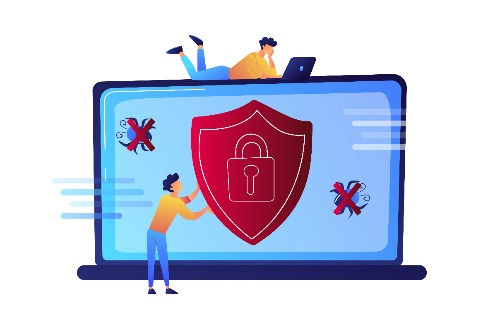Application Whitelisting–Our Nation’s Solution?
Application Whitelisting Cybersecurity. Never in our history has cyber security been a bigger threat than it is now. Whether it is our computers, smart phones, tablets, televisions, smart watches, etc., they’re all at risk. Malware and ransomware threats are becoming an increasing menace.
How can we possibly secure our data against these threats? The FBI and The Department of Homeland Security have encouraged device users to implement application whitelisting as an advanced measure to help mitigate the risk of a malware infection. The NSA has also added application whitelisting to their best practices.
What is Application Whitelisting?
In order for you to understand whitelisting, you first must understand blacklisting — the traditional method used for device protection.
Blacklisting is the methodology of keeping track of every known threat. These threats are present on a “blacklist”. When a file or program attempts to execute on your device, it is compared to the blacklist. If the file/program is found on the blacklist, it will not run because it is a known malicious threat. This method of security is no longer acceptable, because malware changes every single second. This makes it impossible for the blacklist to remain adequately updated, to prevent malware infections. Furthermore, some malware infections are fileless such as zero-day infections and those are certainly not on any antivirus blacklist until they infect an unsuspecting target. More alarming, are malicious files masquerading as legitimate software programs that gain access to your system through a software vulnerability not yet on any malware blacklist.
Application whitelisting is the exact opposite of the blacklist approach. Instead of keeping a list of “bad” files, application whitelisting is a list of all known trusted applications. Therefore, when you attempt to run a file or program on your computer, it is compared to the whitelist. If it is found on the whitelist, it is allowed to run because it has been tested and deemed secure. If the file is not on the whitelist, it is blocked until testing can be done to determine its security. Read more about whitelisting best practices.
What About False Positives?
False positives are the primary inconvenience when using application whitelisting. False positives occur when a whitelisting solution will not allow a safe program to run. This is when testing takes place to determine the security of the program or file. App Whitelisting differs from App Control in the sense that application control programs will allow new or unknown files or file updates to run as long as they are updating to a known publisher’s software directory. This is less secure as it allows malicious files and scripts to piggyback onto legitimate programs and run undetected on a device or network. Whitelisting technology scan every file, script and process regardless of the software publisher’s reputation and so naturall may incur more false positives.
Even with the mild inconvenience of a few false positives, most PC users would rather have a higher level of protection against modern cyber security threats and cope with the minor inconvenience of a false positive, than provide malicious files the opportunity to execute by using a sub-par security solution that excludes whitelisting. Read more about what is Application Whitelisting.
How to Start Implementing Application Whitelisting
As stated above, some of our nation’s largest security offices are encouraging whitelisting as a way to address the risk of malware and ransomware attacks, but how do you implement it? There are a few ways to begin the process, some more time consuming and backend work than others.
- Start your own “whitelist”. You can accomplish this through the IT department, your own personal computer, etc. This however, is incredibly time consuming, and creates a significant amount of backend work for the IT department. Creating a whitelist from scratch is an option, but not a very good one.
- Use a security solution that already includes application whitelisting. This is probably by far, the best option. Do your research on cybersecurity firms and solutions. Many claim to use whitelisting, but actually do not use it as their primary method of detection.
- Use Application Whitelisting for Endpoint Security. Part of protecting endpoint devices is only allowing safe, legitimate programs to run while at the same time only granting access to legitimate users to the network. To accomplish both of these cyber security goals, whitelisting uses a zero-trust approach to cybersecurity. Zero Trust Access and Architecture along with a whitelisting layer, is a security solution that is becoming one of the most effective for combating cyber threats and bad actors looking to penetrate network security.
PC Matic and PC Matic Pro
PC Matic and PC Matic Pro have been working on their whitelist for years. It is the only global whitelisting agent that is automatic, creating minimal backend work for the PC users and IT departments. Our application whitelisting is far more effective than competitors in preventative malware detection, scoring a 99.9% proactive detection rating in the most recent Virus Bulletin Reactive and Proactive (RAP) Test. The whitelist is easy to implement and update from a cloud console. Systems administrators can also update operating system security patches and drivers automatically. In addition, security features include ransomware protection, and RDP port control access authentication and control.
To keep your business data, servers and network secure, use Application Whitelisting for Business as part of a comprehensive cybersecurity business systems plan. Our business security software protects servers, networks, cloud and hybrid environments from cyber attack. Compare system security solutions.
Read more about ransomware and AWL as a security solution to fight and guard against ransom attack and growing cyber threats. Try PC Matic Cybersecurity solutions and antimalware products proudly made entirely in the USA.




